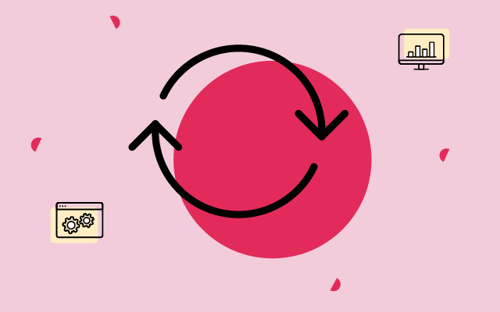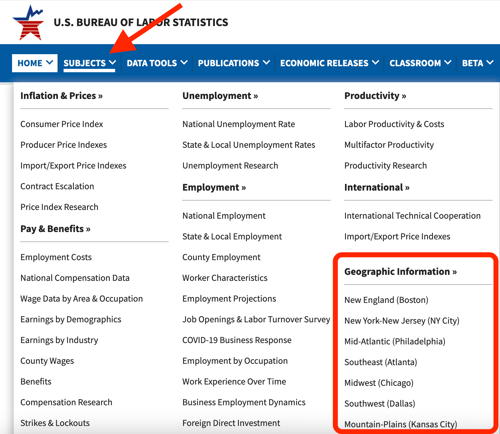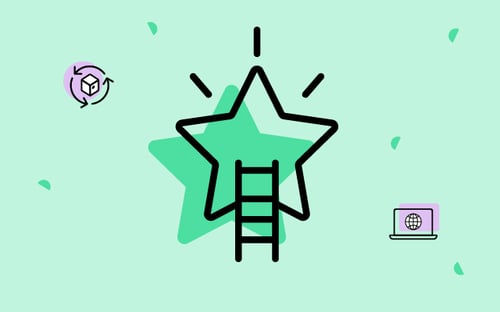Q. Tell us a little about your role at Bloomerang
I head up our Market Insights function, which covers competitive intelligence and win-loss analysis. Additionally I serve on our AI adoption team with the mission of enabling our marketing team to use AI for operational efficiency, enhanced customer experience, and maintaining a competitive advantage. I uncover what matters most in the market — think of me as Bloomerang’s Gladys Kravitz except instead of spying on the neighbors from behind curtains, I'm tracking competitor moves from Crayon!
Q. You’ve been using Sparks, Crayon’s AI-Powered research and analysis tool. How do you see AI changing the competitive intelligence function?
Competitors in every industry, especially SaaS, are in a constant state of flux and it’s nearly impossible to not only to track their moves but to also distill insights into something useful and actionable for various teams across the company. This is something that has traditionally taken a lot of time.
AI is fundamentally shifting the competitive intelligence function by automating the tedious work and heavy lifting. A tool like Sparks automates the data collection from various sources, conducting quick analysis, and delivering real-time insights. Now, AI adopters can get intel and insights instantly so they can respond within hours — which can be the critical difference between winning and losing.
But AI doesn’t change the fact that practitioners still need a strong foundation. You can have a professional set of knives, but that doesn’t make you a great chef. Human curiosity is still going to be critical for extracting those non-obvious insights.
Q. How are you using Sparks across different teams at Bloomerang?
Sparks has been my go-to for keeping our marketing team ahead of the curve. I run Sparks to help our marketing team stay on top of competitors' strategic moves, narratives, events, news, PR, and social media. The marketing team can use these insights to inform campaign strategy and content creation. When I showed them how much time it can save they were blown away. Now I have Sparks that run weekly and monthly to keep that team up to date.
A great use case for the sales team is having Sparks pull valuable insights from our Gong calls, which the sales managers can then take to better train the reps in competitive deal scenarios.
Q. You mentioned “voice of the buyer” as a key area. Can you share more about that?
One of my favorite Sparks workflows is analyzing the “voice of the buyer” to make sure we’re on top of common themes (objections, product expectations, gaps) that are coming up prospect calls. I find a lot of gold nuggets in there about what they do and don’t like about their current software and why they may have outgrown it.
Sparks can then inform our competitive positioning — particularly what to highlight on our comparison pages. Instead of trying to figure out what differentiators matter the most, I have data-driven insights guiding those decisions.
Q. How does Sparks support your product team?
One of my favorite ways I started using Sparks is to identify product gaps that could be causing us to lose deals. Like many companies, our Salesforce data can be 'incomplete' — which makes it challenging to get deep insights.
What I love about Sparks is how it “spackles the data gaps.” Our reps are focused on selling, not logging every detail from prospect calls, which creates incomplete CRM data. Crayon helped overcome the Salesforce data gap by surfacing and capturing the conversation directly from our prospects within Gong calls — in their own words — and delivers missing insights we can't get from Salesforce.
Here’s a real-world example: I noticed a few threads in Slack where reps were asking how our product stacks up in a certain feature — clearly tied to competitive conversations. But when I checked Salesforce, there was nothing that reflected those themes. So I ran a Spark for the past quarter to see how often that feature was coming up. It surfaced a wealth of detailed insights straight from buyer conversations. That kind of intel is perfect for our product team.
I set up a weekly Spark for our product team which provides them with these kinds of recurring themes. In fact, one of our lead product managers told me, “I inherently trust Gong calls + AI more than the Salesforce data, and it's super easy to scan.” This gives our teams real clarity on what customers are actually looking for, so they can prioritize and bring the right solutions to market. Sparks. Spackle. Sparkle - see what I did there?
Thank you Lisa! AI-powered competitive enablement is here — learn more about Sparks from Crayon.

Related Blog Posts
Popular Posts
-
 How to Create a Competitive Matrix (Step-by-Step Guide With Examples + Free Templates)
How to Create a Competitive Matrix (Step-by-Step Guide With Examples + Free Templates)
-
 The 8 Free Market Research Tools and Resources You Need to Know
The 8 Free Market Research Tools and Resources You Need to Know
-
 Sales Battlecards 101: How to Help Your Sellers Leave the Competition In the Dust
Sales Battlecards 101: How to Help Your Sellers Leave the Competition In the Dust
-
 6 Competitive Advantage Examples From the Real World
6 Competitive Advantage Examples From the Real World
-
 How to Measure Product Launch Success: 12 KPIs You Should Be Tracking
How to Measure Product Launch Success: 12 KPIs You Should Be Tracking



%20(1).png?width=500&name=CI%20Strategy-CI%20Audit%20(1)%20(1).png)